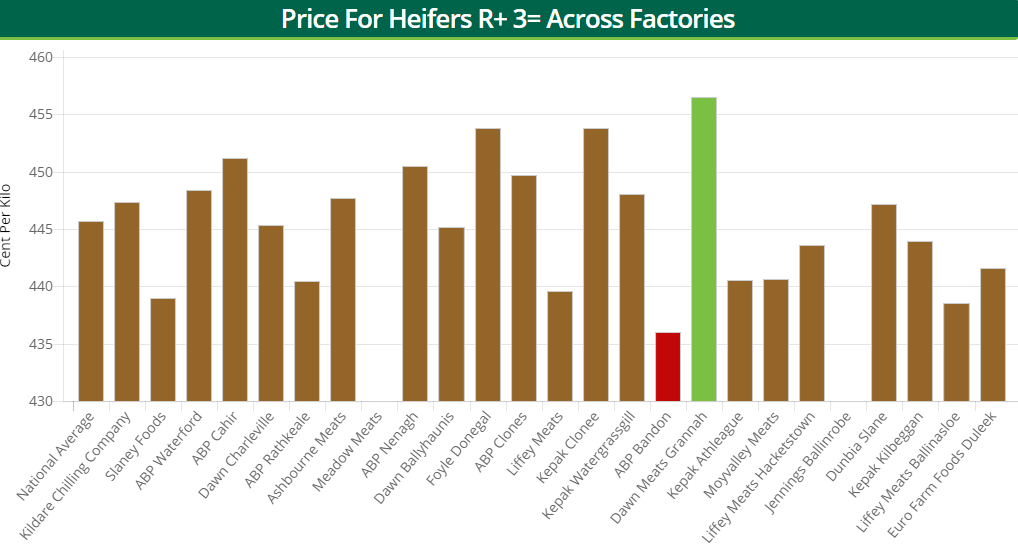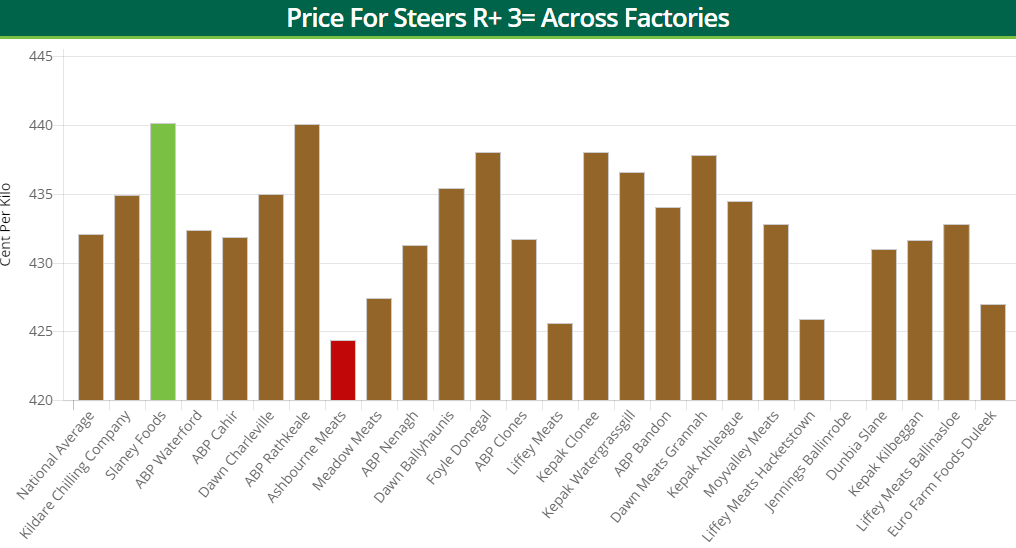Although many factories are starting negotiations with farmers at 415c/kg for steers and 420c/kg for heifers, the number of cattle being marketed at these prices is relatively small.
Many farmers are holding out for base quotes at 420c/kg for steers and 430c/kg for factory-fit heifers. When it comes to marketing cattle, farmers should bargain with procurement managers; deals can be done on age limits, transport costs and carcass weights.
Cattle supplies are predicted to be tight for the next few weeks and this will, in turn, have a positive effect on prices – at least in the short term.
During the week ending May 13, in-spec, R+3= heifers made a top price of 456.49c/kg, while the average price paid stood at 445.74c/kg.
Furthermore, a top price of 440.15c/kg was achieved for R+3= steers; the average price paid for these animals stood at 432.04c/kg.
Cows
Buyers are offering 340-350c/kg to purchase P-grade animals. In addition, procurement managers are starting negotiations with farmers for O-grade and R-grade cows at 350c/kg and 370c/kg respectively. Factories are quoting prices of 380c/kg upwards for U-grade cows.
There is quite a variation in the prices being quoted to farmers for cows and this depends on the quality and grades being presented. The location and demand of individual processing plants also has to be factored into the equation.
During the week ending May 13, O=3= cows made a top price of 370.80c/kg, while the average price paid stood at 363.10c/kg.
The beef kill
Official figures from the Department of Agriculture show that some 31,197 cattle were slaughtered in approved beef plants during the week ending May 20.
Although this is a slight increase on the week before, it’s largely due to the resumption of normal processing after the bank holiday weekend.
The latest data indicates that some 11,252 steers were slaughtered in approved export plants during the week ending May 20 – an increase of 689 head.
An increase was also witnessed in both the young bull and aged bull categories – up 504 head and 146 head respectively.
Moreover, the number of heifers slaughtered during the week ending May 20 stood at 8,246 – up seven head on the week before.
Of the 31,197 animals sent for slaughter, 6,881 of these were cows. Week-on-week supplies of these animals grew by 291 head or 4.4% during the week ending May 20.
- Young bulls: 3,871 head (+504 head or +15%);
- Bulls: 789 head (+146 head or +22%);
- Steers: 11,252 head (+689 head or +6.5%);
- Cows: 6,881 head (+291 head or +4.4%);
- Heifers: 8,246 head (+7 head or +0.08%);
- Total: 31,197 head (+1,756 head or +5.6%).
‘Farmers should insist on full value of their stock’
The Irish Farmers’ Association’s (IFA’s) national livestock chairman, Angus Woods outlined that grass cattle are well behind target and that farmers should bargain hard when it comes to marketing their stock.
He said: “Grass cattle are a long way off and farmers with cattle on feed should talk directly to their agent or factory procurement manager and work out both the delivery terms and the price.
“Supplies are going to be very tight over the coming weeks and farmers should insist on full value for their stock,” he added.



